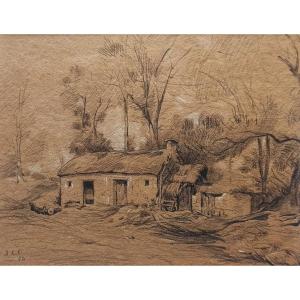Landscape with a cottage, 1884
21 x 27 cm
Graphite and charcoal on brown paper, heightened with white chalk
Signed and dated lower left “JCC 84”
Framed, under glass
Dimensions with the frame: 29 x 35 cm
Charming drawing, very well preserved, signed by a fascinating painter, engraver and draughtsman whom the history of art tends to forget. Jean-Charles Cazin was one of the most admired artists of his time, his paintings are kept in the finest museums.
*
The studies on Cazin underline the fact that his practice of drawing most often corresponds to the constitution of a repertoire of forms for his future paintings. These are not really preparatory studies, but drawn memories that can later enrich the painted compositions: “la mémoire pittoresque”. This way of approaching the graphic arts is a legacy of the years 1862-1863 during which Cazin was a pupil of Horace Lecoq de Boisbaudran, teacher of other artists of this time such as Léon Lhermitte, Henri Fantin-Latour, Auguste Rodin and Alphonse Legros.
Between 1884 and 1888, Jean-Charles Cazin traveled a lot, mainly to Northern Europe and brought back several drawings. On the way to the Netherlands, this drawing from 1884 is reminiscent, in particular, of the Landscape with three cottages, an etching from 1640 by the absolute master, Rembrandt (see the comparison in the photo gallery).
Several drawings by our artist are kept at the Petit Palais and at the cabinet des Arts graphiques du Louvre.
*
In his study on Jean-Charles Cazin published in 1902, Léonce Bénédite evokes the artist's sensitivity to landscapes in these words: "He took many notes on nature, drawings in lead pencil and especially in black pencil or in lithographic pencil, more or less pushed, rarely to effect, always very blond, and drawn in small parallel lines with the air of an engraver's preparation. (p.59). “As a landscape painter […] he sings, in the minor mode, music that is infinitely soft, high-pitched and penetrating, very simple and very subtle at the same time. He is a seer who contemplates, dreams and reflects. He does not want to strike or convince us, but to persuade and move us. (p.64)




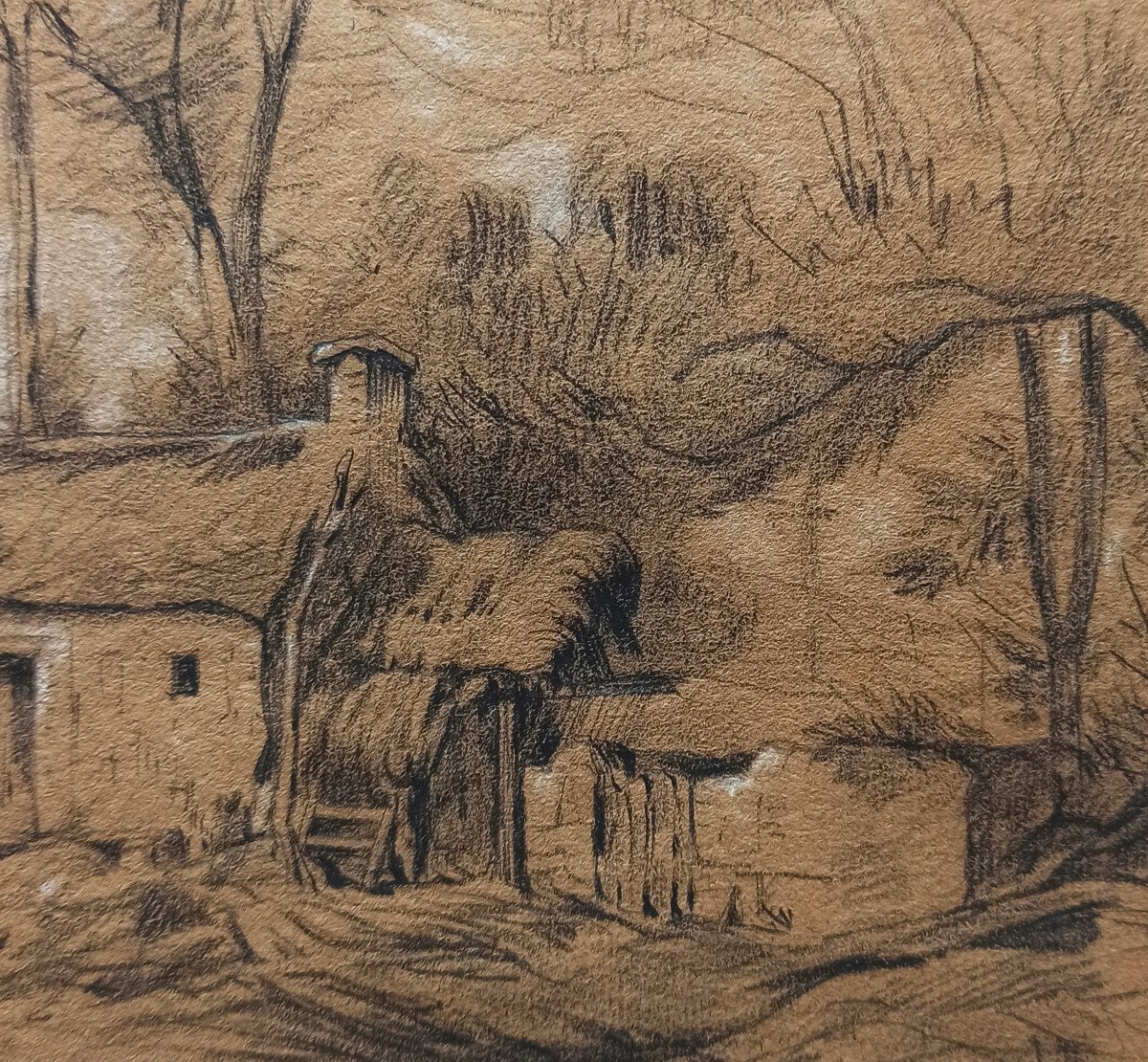
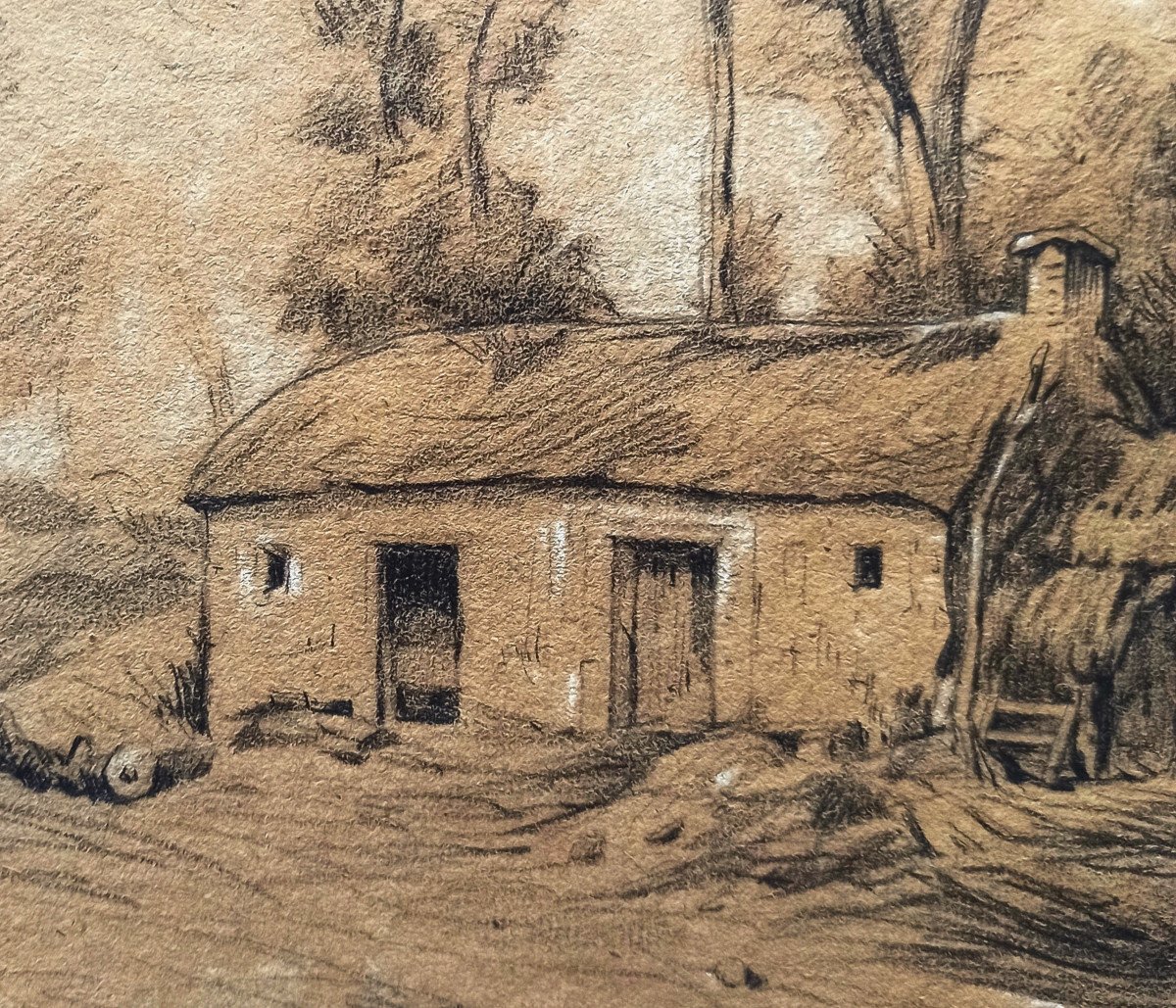
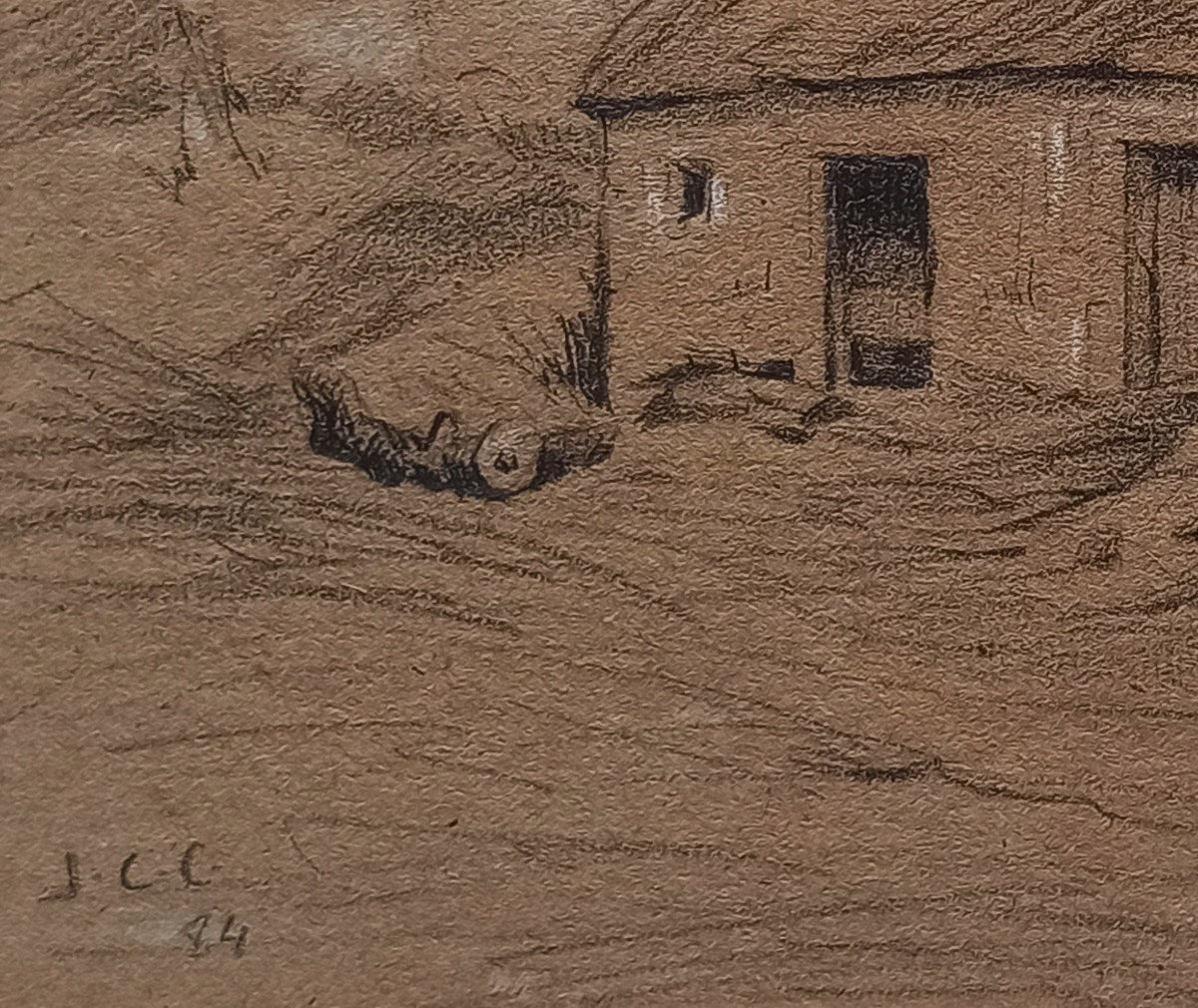




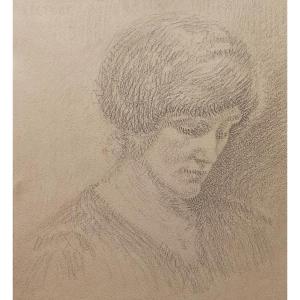
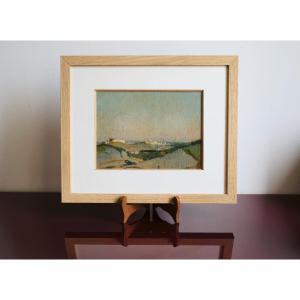
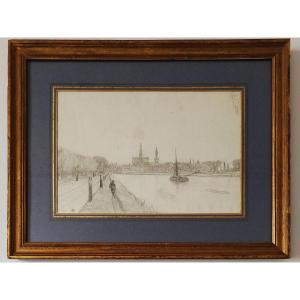
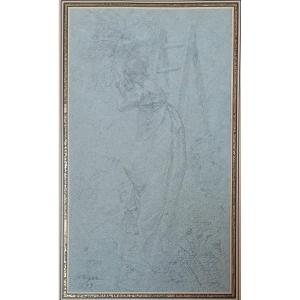

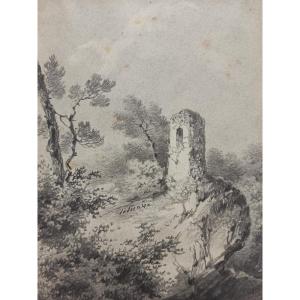
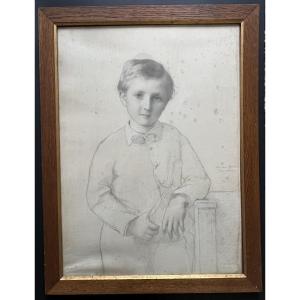
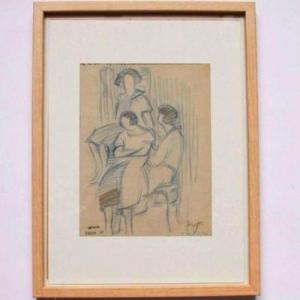


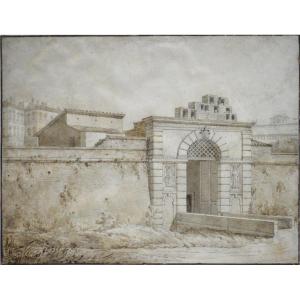




 Le Magazine de PROANTIC
Le Magazine de PROANTIC TRÉSORS Magazine
TRÉSORS Magazine Rivista Artiquariato
Rivista Artiquariato
